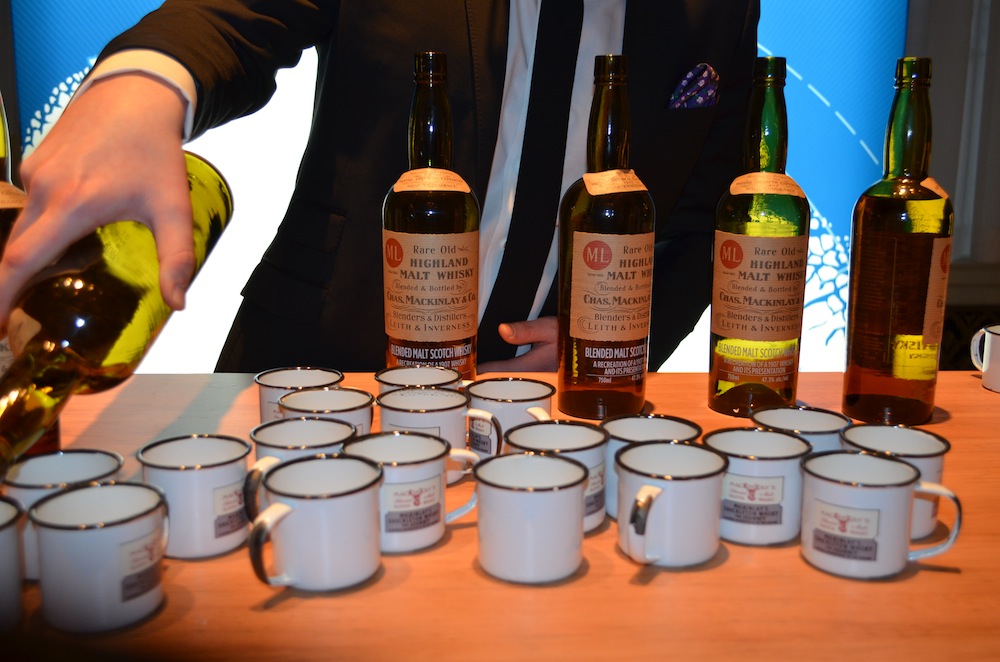Ambience Influences How Whisky Tastes

A whisky sipped in a room smelling of fresh-cut grass with the sound of sheep "baa-ing" in the background tastes different from having the same drink in a sweet-smelling, red room with piano music playing, research suggests.
Many people have noticed that the environment where food or drink is consumed can affect its taste, but few scientific studies have been conducted to investigate the phenomenon. In the new study, participants taste-tested whisky in three different environments, reporting that it tasted different in each.
"The atmosphere plays a much bigger role than any of us realize," said study researcher Charles Spence, a psychologist at the University of Oxford. [5 Things You Don't Know About Bourbon]
For example, drinking wine on vacation in the Mediterranean is never quite the same as when buying a bottle of that wine and consuming it at home on a winter's evening, Spence told LiveScience.
Scientists more often have explored how the environment influences the taste of wine. But wine is notoriously finicky — it changes from year to year, and a badly corked bottle can taste off. Spence and colleagues used whisky because it has a similar complexity to wine, but a more consistent taste.
At a large whisky-tasting event in London, the researchers created three specially designed rooms for their taste-test: A "grassy" room had a turf floor, the sound of "baa-ing" sheep and the smell of freshly cut grass; a "sweet" room was filled with a sweet fragrance, rounded red objects and a high-pitched tinkling sound (all of which people associate with sweetness); and a "woody" room with wooden paneling and floorboards, the sounds of leaves crunching and log fires, and the smell of cedar wood.
The researchers gave between 450 and 500 members of the public who weren't whisky connoisseurs a glass of 12-year-old single-malt Scotch whisky and took them in small groups through the grassy room, the sweet room and the woody room, sequentially.
Get the world’s most fascinating discoveries delivered straight to your inbox.
In each room, the tasters used a scorecard to rate attributes of the whisky, including the "nose" (smell), the taste or flavor, and the aftertaste, as well as how much they liked it.
The atmosphere of each room had a notable effect on how the whisky tasted, the ratings showed. Tasters rated the whisky as tasting grassier in the grassy room, sweeter in the sweet room, and having a woodier aftertaste in the woody room. Most people thought the whisky tasted best in the woody room.
To rule out the possibility that the context of the experiment was leading to the results, the group pretested a small group in a lab environment, finding that sights and sounds affected people's taste even when they weren't aware of any manipulation.
The environment was harder to control in the larger public experiment. The researchers worried that participants might knowingly try to confound the results by rating the whisky's taste as opposite from the characteristics of each room. But "on average, people were drawn toward attributes the rooms were designed to create," Spence said.
The findings, detailed today (Oct. 8) in the journal Flavour, illustrate the importance of the surroundings on the taste and flavor of food or drink.
How a meal tastes, whether at a restaurant or a dinner party, "is going to be some combination of the best ingredients combined with the atmosphere," Spence said. "Having one without the other, you get something that is never going to be as much as if you combine all the elements."
Follow Tanya Lewis on Twitter and Google+. Follow us @livescience, Facebook & Google+. Original article on LiveScience.



